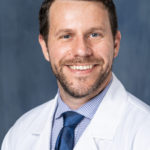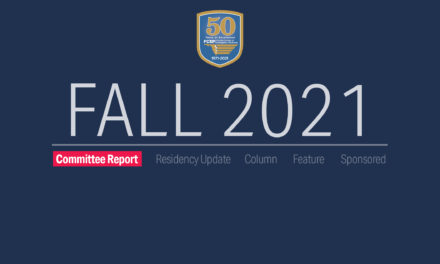Critical Care Medicine Specialization and Certification within Emergency Medicine: Past, Present and Future
Editor’s Note: The online version of this article contains more background information from Dr. Jay Falk’s interview for the 50 Years, 50 Voices project. Dr. Falk is a past-president of FCEP (2015-2016) and a current FEMF Board member.
The Past
Historically, there has been a consistent link between emergency medicine (EM) and critical care medicine (CCM). The specialties have significant clinical overlap – shock, respiratory failure and airway management are common threads between the two fields, and there are obviously many more. Certification of emergency medicine physicians to practice critical care medicine similarly has a long, and somewhat controversial, history.
“The critical care community and the EM community have been, up until very recently, two total separate communities. They didn’t know one another and they didn’t understand one another.
“The founding fathers of critical care had this idea of a continuum: get the patient into the ED where they could be stabilized and resuscitated with a smooth transition to critical care units and then back into the community. But that wasn’t happening – instead, there was a lot of tension between the ER’s and the ICU’s. The ER would call up to the critical care units and their nurses would say, “oh I’m sorry, we’re not ready to take that patient.” The emergency nurse would reply, “what do you mean you’re not ready? We take anything that comes in the door; how can you not be ready!” – excerpts from Dr. Jay Falk’s interview
“When the Internal Medicine Board certified family medicine as a specialty in 1969, they immediately had regrets about it because they lost the primary care aspect of internal medicine practice. When EM was a conjoint board (1979-89) and wanted to have certification in critical care, they were also seeking primary board status and needed internal medicine’s blessing. The Internal Medicine Board said, “look, we just gave away family medicine. We’ll support your bid to be a primary board if you promise that you’ll look away from the hospital, and you won’t start taking over pieces of the hospital, like critical care.” Of course, for ABEM, the goal to become a primary specialty was much more important, so they agreed, which was perfectly rational at the time.” – excerpts from Dr. Jay Falk’s interview
“I spent, literally, 30 years working on certification in critical care for emergency physicians. I was the section member of emergency medicine in the Society of Critical Care Medicine group for about 15 years. For the first 10 of those years perhaps, there were about 15 members complaining about how they couldn’t get certified in critical care. I got certified because I was also certified in internal medicine – I took the Emergency Medicine Boards and was grandfathered in because I didn’t train at an EM residency, given that they didn’t exist at the time I graduated from medical school.
“When I came down to Florida, one of the things I did was create a post-graduate course called ‘EM for the Critically Ill and Injured.’ We had the founding fathers Max Wyle and Peter Rosen from emergency medicine and many others as part of the faculty, and it really started to merge those two communities.” – excerpts from Dr. Jay Falk’s interview
The Present
In 2011, decades of advocacy led to fruition. The American Board of Internal Medicine (ABIM) and ABEM agreed to co-sponsor board certification in CCM. In 2012, the American Board of Surgery (ABS) followed suit, and the American Board of Anesthesia (ABA) followed soon after in 2013. Neurocritical Care certification via the United Council for Neurologic Subspecialties (UCNS) had long allowed emergency physicians to complete board certification by that point.
“As EM grew as a legitimate specialty and began to attract the best and the brightest, when that first exam was offered to EM graduates, they were in the top 1% of all Board-takers that year, and continue to just nail it beyond the rest of the people who are taking it.” – excerpts from Dr. Jay Falk’s interview
Despite the approval of a CCM certification pathway for EM physicians, there is still significant controversy. There are significant training requirements asked of EM residents that are not required of graduates of other fields. ABIM applicants are required to have 3 months of non-ICU internal medicine rotations; if this is not completed prior to matriculation, the applicant must complete these rotations during fellowship. The first year of ABS training is considered a “preliminary surgical year” where an EM applicant is expected to gain experience in non-ICU surgical patients. Graduates of surgical or anesthesia programs complete only one year of a critical care fellowship; EM graduates are required to complete two years. Unfortunately, the reasons for these differences in prerequisites, curriculum and training length are likely due to compromises made during the integration of EM into the world of CCM.
The Future
As ICU patient boarding within the emergency department continues to worsen nationally, institutions across the country have begun to implement ED ICUs – areas of the emergency department dedicated to caring for the ICU patient that remains in the ED. Frequently, these ED ICUs are staffed by emergency medicine intensivists. The model of ED ICU care varies, with some hospitals allocating a physical space with accompanying staff, whereas others employ an “open” ED ICU model, where a resource intensivist consults and advises on boarding ICU patients. There certainly seems to be significant merit to this model, especially in the context of the Covid-19 pandemic and soaring rates of ED overcrowding – in fact, recent literature suggests the presence of an ED ICU improves patient oriented outcomes.
In 2018, the Society of Critical Care Medicine released a joint statement calling for change in critical care training. Specifically, this white paper calls for the establishment of critical care as a primary specialty, a unified training process, and a unified certification process, rather than the fragmented, multi-specialty pathways that exists currently. This remains a goal of the organization, and discussions regarding curriculum, prerequisites and training duration are on-going. In the future, all candidates, regardless of training, may enter the same training program and complete the same certification exam. ■

Casey Carr, MD
Assistant Professor; Director, Student and Resident Critical Care Education; Co-Director, Cardiac Arrest Programs; Division of Critical Care, Department of Emergency Medicine, UF







